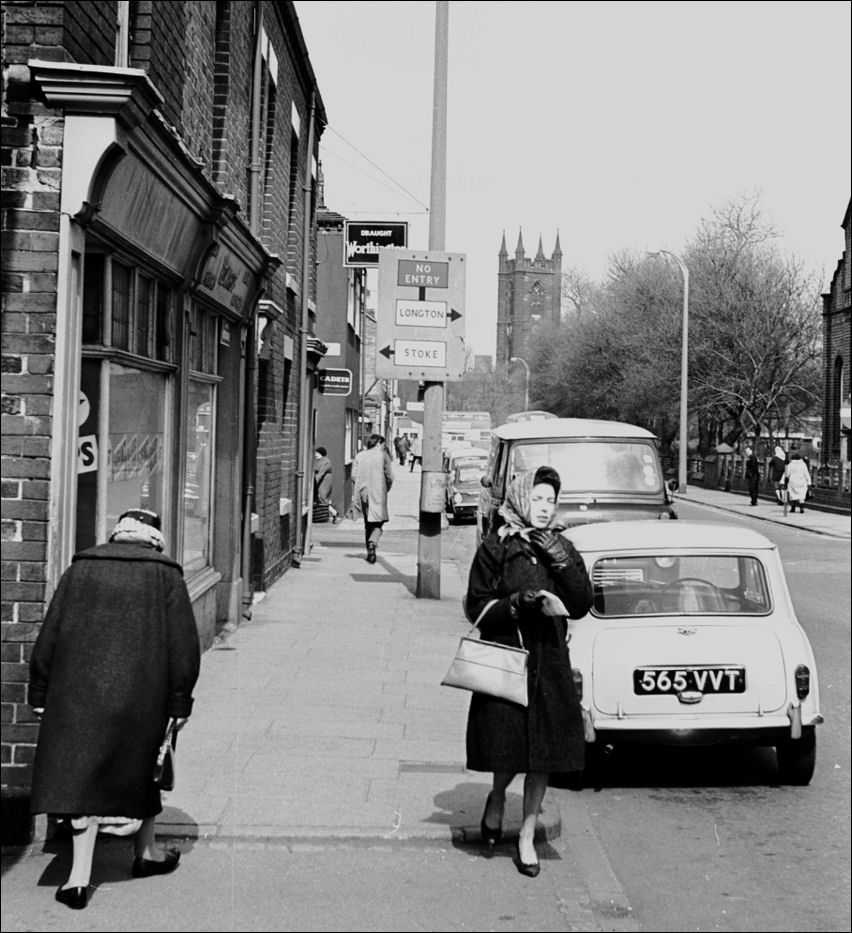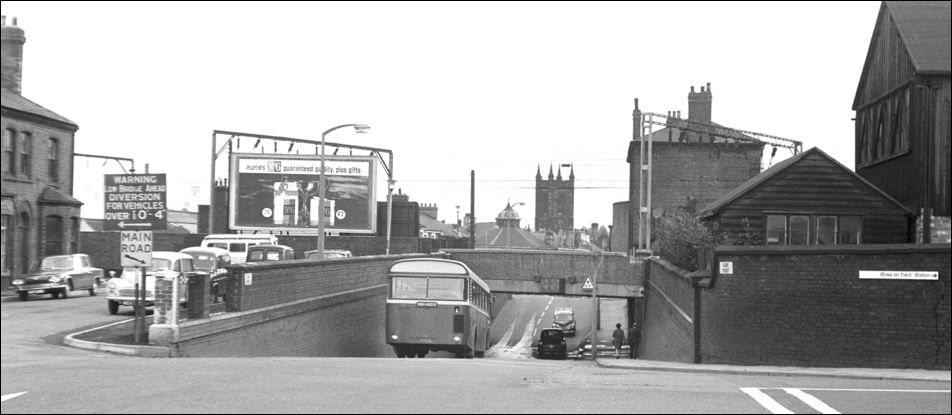![]()
|
|
|
|
|
Stoke-on-Trent - photo of the week |
Advert of the Week
Potworks of the Week
Stoke town - 1967 - two
views of St. Peter's Church

Campbell Road in 1967 -
before the A500 dual carriageway was built in 1974-77
in the background is St.Peters
Church
photos: Ken and Joan Davis
|
Campbell Road in Stoke was named after Colin Minton Campbell the son of John and Mary Campbell, was born in Liverpool on 27 August 1827.
Colin Minton Campbell also founded the Campbell Brick and Tile Co. in 1875. His business interests other than pottery included the North Staffordshire Railway, of which he was chairman 1873-83, and the Staffordshire Potteries Waterworks Co., of which he was a director.
In the three years during which he occupied that office a range of new public works and buildings were initiated and completed. They included the construction of the new market hall, the extension of the public baths behind the Minton Memorial Building, and the laying out of a new municipal cemetery at Hartshill. When he came up for re-election in 1883 the members of the town council tried to persuade him to continue in office but he pleaded ill-health and pressure of work and stood down. He died two years later and soon afterwards it was proposed that a statute should be erected to mark the contribution he had made to the town and the Staffordshire Potteries.
|

a view of St. Peter's church
from the other direction- Glebe Street
to the right is Station Road